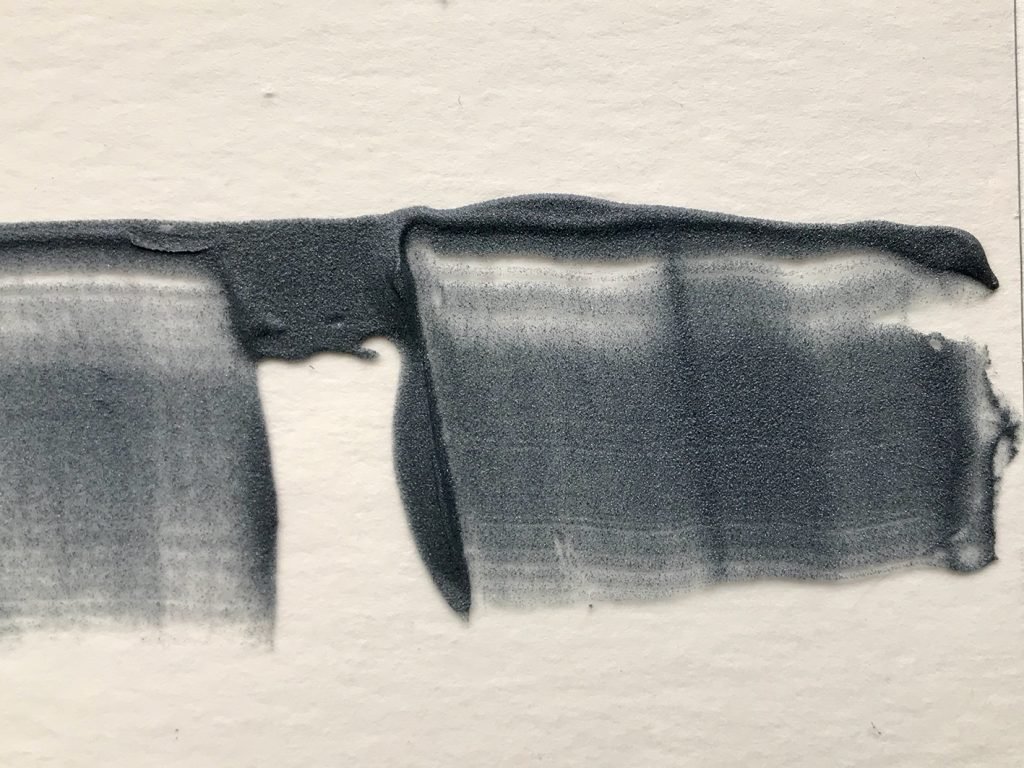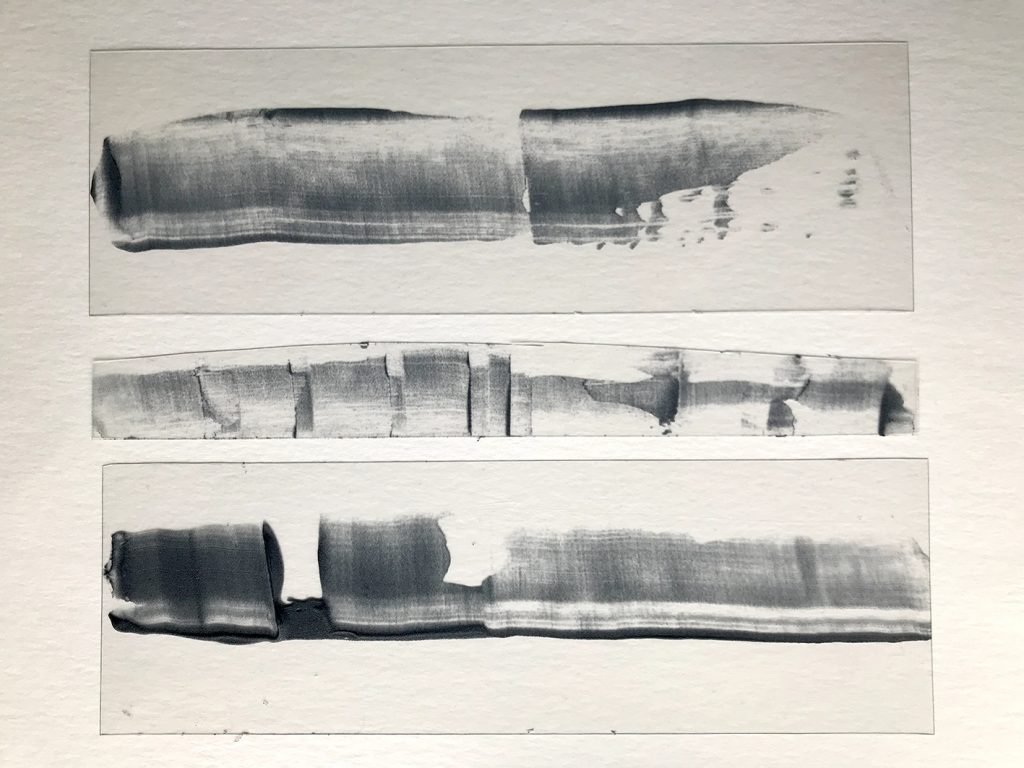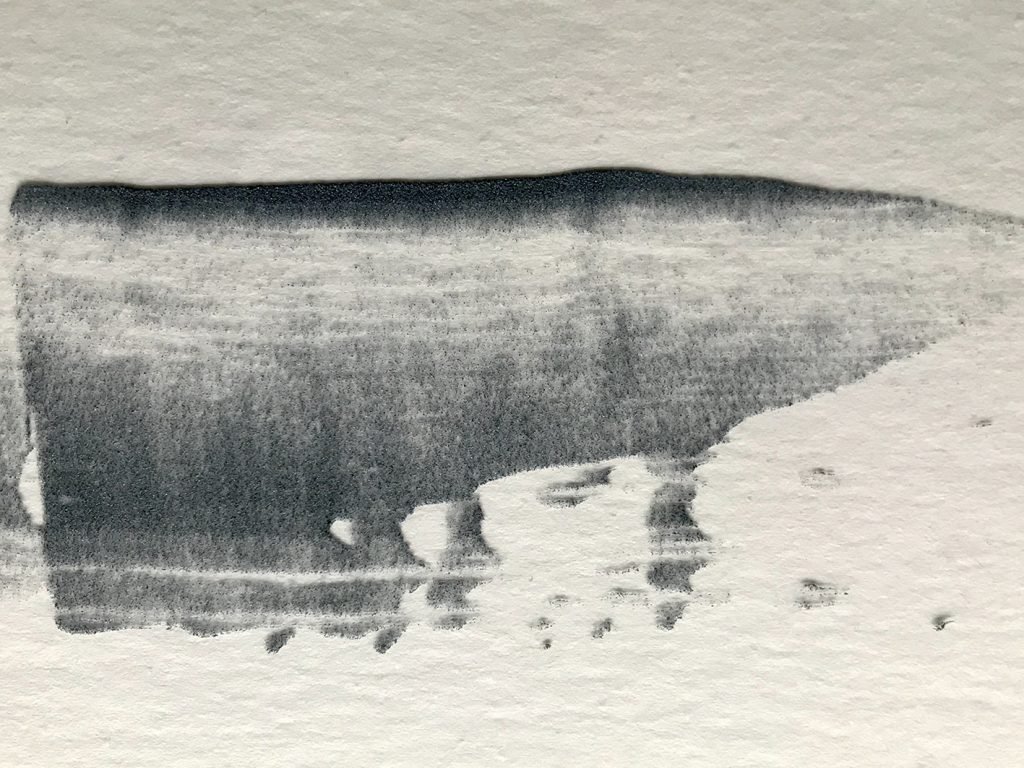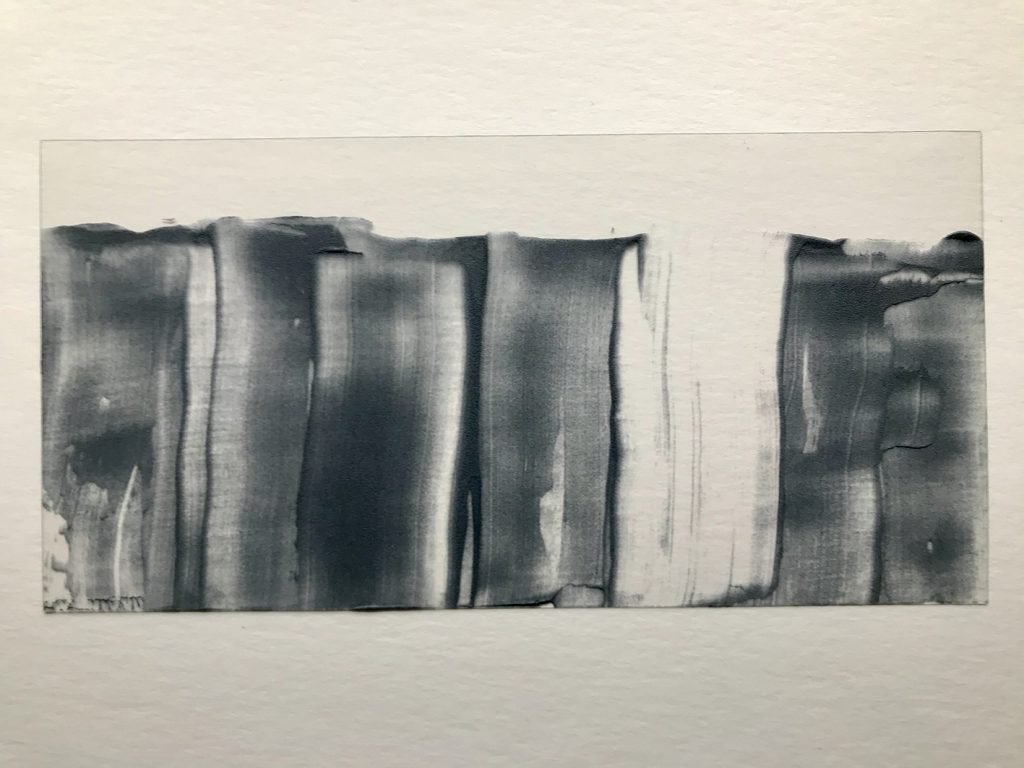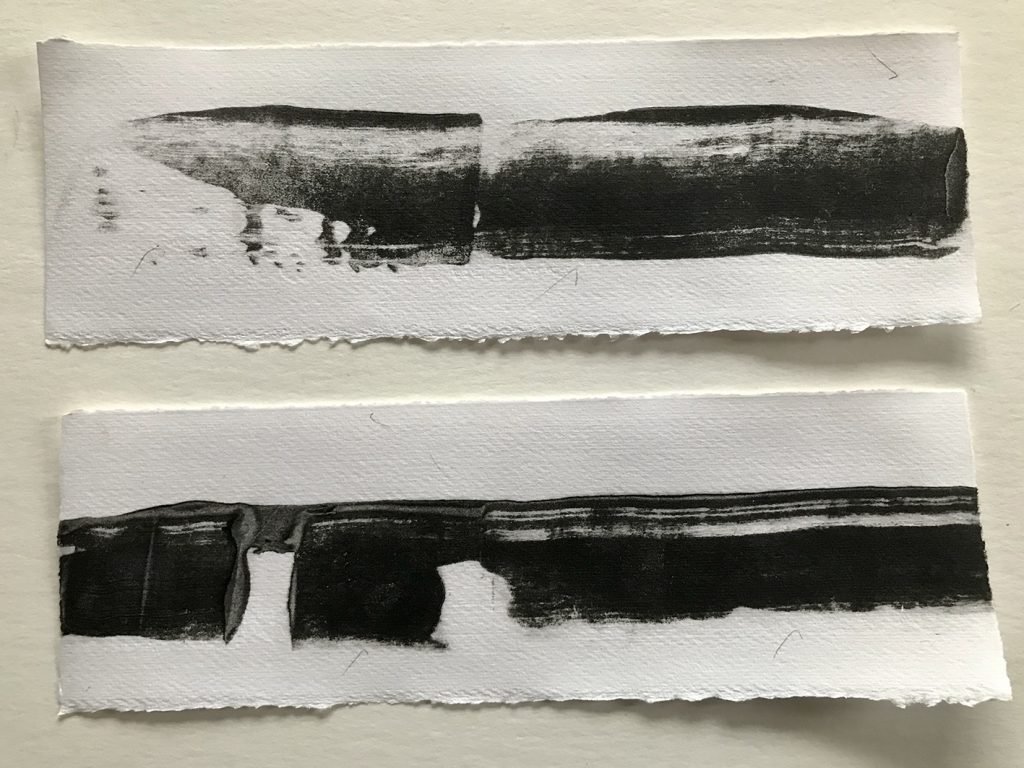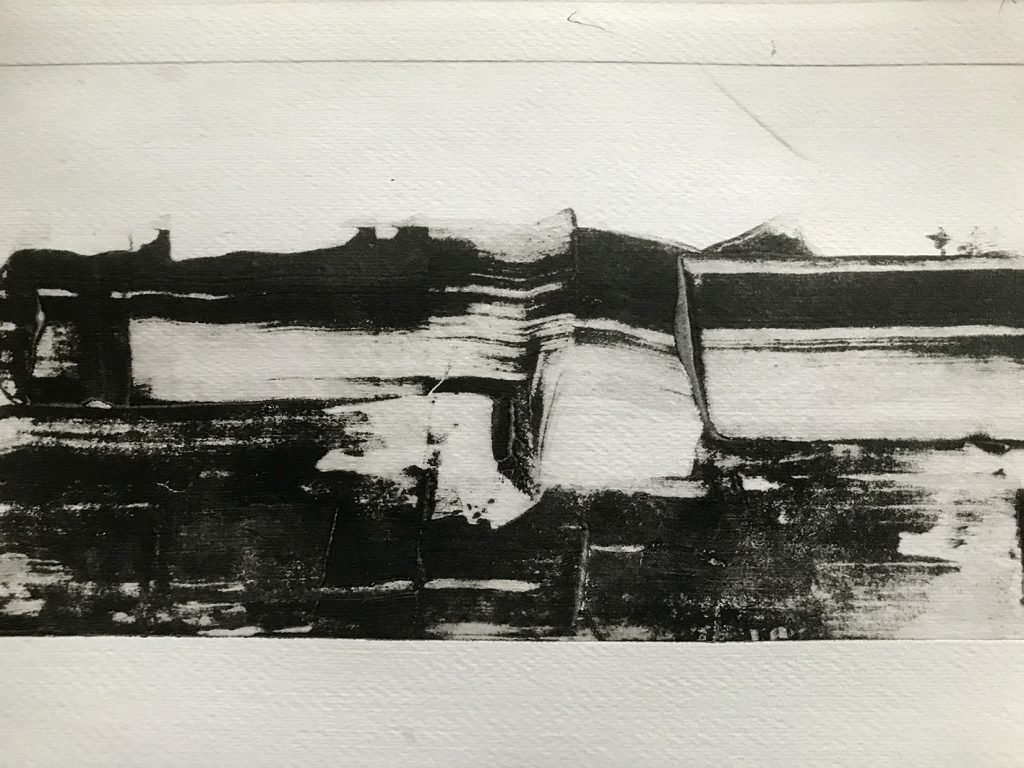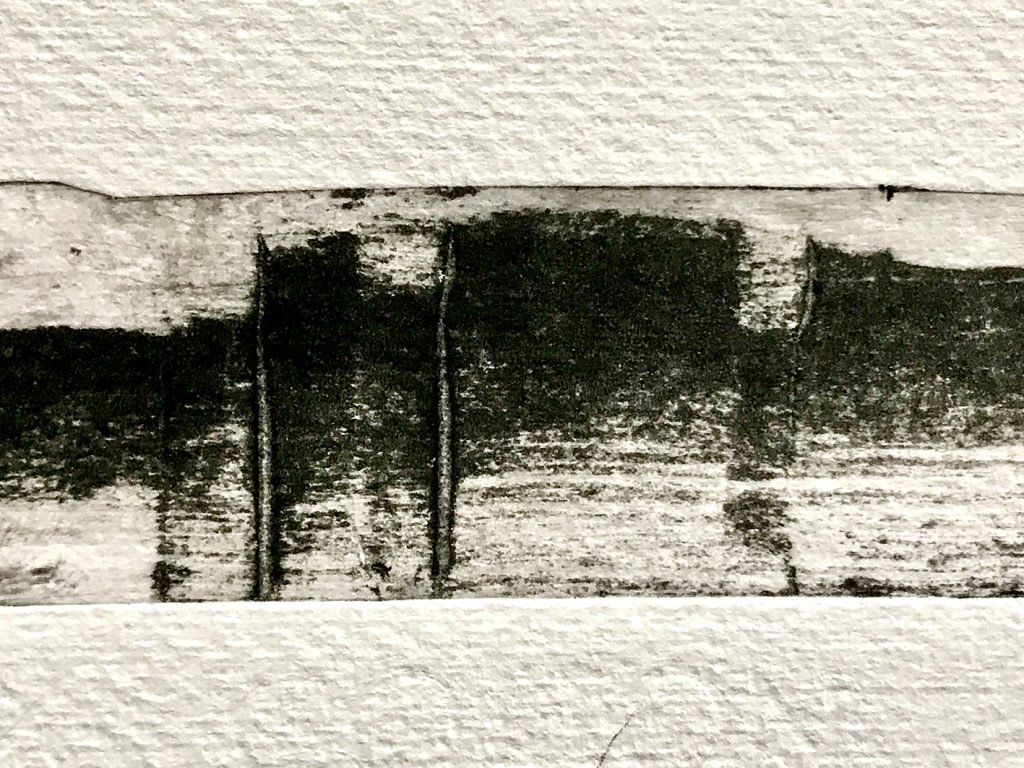I am always looking for materials that create interesting textures on the printing plate. However, these textures do not always print well or consistently. In part, this is because the variations in depth that are created by different materials cannot always be overcome by the printing press, even at the high pressures at which it operates.
Of course, this is entirely my fault, as I am constantly pushing at the edges of what the collagraph process can achieve. Often, the difference in depth between the lowest and highest areas of the plate is too great, resulting in poor impressions from those lower areas. recently, I have remedied this issue by making more robust plates with much less variation in depth, but I have also found an interesting material that makes the production of successful plates easy – carborundum paint.
Above: a plate smeared with carborundum paint
Like many of the techniques I have used to improve the quality and creative possibilties within my practice, the reference source is The Curious Printmaker, aka Emily Harvey. Inspired by Emily’s examples, I have used carborundum paint to daub, smear and drag marks on clear acetate sheets, which allow me to clearly see the marks made and the areas which will be unaffected or clear in the resulting prints.
Above: more carborundum paint plates
Above: prints made from the plates
Above: print detail
My printmaking approach is largely about spontaneity and the abstract – producing the most interesting marks and images that I can, without planning or ‘design’. The paint has allowed me to remain close to essence of this ethos, safe in the knowledge that the marks will print consistently and will remain robust for throughout a greater number of impressions. This will make the creation of larger editions possible, if I choose.
Link to Emily’s blog post:
https://www.thecuriousprintmaker.co.uk/carborundum-paint/
Find all my posts about my print stories on Twitter at: #artprintstories
